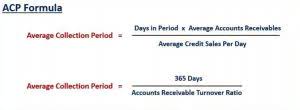Content

A downside of encumbrances is that they increase the complexity of government accounting to some extent. A tax lien is a lien imposed by a government to force the payment of taxes; in the U.S., a federal tax lien trumps all other claims on a debtor’s assets. A mechanic’s lien is a claim on personal or real property the claimant has performed services on.

Once the encumbrance is approved, the funds are no longer available for use in other transactions. Any encumbrance funds are not part of the actual funds ledger balance, because payments haven’t been processed. Once a vendor is paid, the encumbrance is lifted and the funds appear in the actual funds balance rather than the encumbrance balance. In encumbrance accounting, that number is upfront and easy for any budgeting committee or CFO to examine.
All CPA Financial Accounting and Reporting (FAR) Resources
They may be financial (for example, liens) or non-financial (for example, easements, private restrictions). A lien is a monetary claim against a property because of an unmet obligation, such as unpaid debt. Liens affect the transfer of title when you sell the house because they give a creditor the right to sell the property to ensure payment. Encumbrance accounting, also known as commitment accounting, tracks anticipated spending to budgeted amounts. The first step encumbers newly entered purchase order line items into the General Ledger to help prevent overspending.
The encumbrance is marketed in your organization’s accounts once you reserve the money. When the money is paid out, the bookkeeper zeros out the encumbrance account and reports the money as a paid expense. By carefully and accurately tracking your encumbrance amounts, you also increase spending visibility. It reduces unnecessary spending when tracked this way and can help catch any fraudulent purchases more quickly. Overall, it can assist in making purchasing information more transparent and easily accessible when needed to enable tracking and overspending prevention. Second, accounts payable generally have shorter terms than encumbrances.
Budgetary Control and Encumbrance Accounting
Encumbrances are essential because they help companies to avoid defaulting on their financial obligations. By setting aside money to cover future encumbrances, companies can ensure they will have the funds necessary to pay their bills when they come due. Pre-encumbrance accounting is the process of setting aside funds to cover future encumbrances. You can also load budget balances
in General Ledger for use in financial reporting, but not for Budgetary
Control.
- Money from the sale of the home would satisfy the encumbrance and pay the contractor.
- Routable provides a complete audit trail to help lower fraud and compliance risk and helps increase visibility through this thorough tracking.
- Encumbrance journal entries and accounting are also sometimes called commitment accounting.
- When you enable the budgetary control flag, the system automatically creates encumbrances from requisitions, purchase orders and other transactions originating in feeder systems such as Purchasing and Payables.
- When your analysis is more precise, your estimated cash outflow will reflect your company’s position more truly.
- A Roth 401(k) is an employer-sponsored retirement account that you can contribute to with after-tax income and receive employer contributions.
Commitment of funds generated by purchase orders are recorded using the EX balance type. In Balance Reports, encumbrances can be toggled on or off to reflect available balances. Report users can use this encumbrance indicator to evaluate their available balances and solvency concerns, at budget or fiscal year end. A lease is an agreement to rent a property for an agreed-upon rate and period of time. It is a form of encumbrance because the lessor does not give up title to the property, but one’s use of the property is significantly constrained by the lease agreement.
What is an example of an encumbrance?
If the first company does not have enough money to cover the contract, it may need to take out a loan or sell assets to raise the necessary funds. The company has already received the goods but has not paid the bill yet. Let’s say a homeowner hires a contractor to renovate and upgrade the kitchen of their house. If the homeowner doesn’t pay the contractor, the contractor may place an encumbrance on the house by filing a mechanic’s lien. If the homeowner does not settle the mechanic’s lien, a judge may order foreclosure on the house.

A negative easement restricts the title-holder, for example, by preventing them from building a structure that would block a neighbor’s light. A business or government can encumber funds in several ways and for several reasons. To get a deed restriction on your property, you’ll likely need to fill out an application and record it with the county clerk. Some localities have templates or agreements that you can fill in with the relevant information. For example, if your neighbor’s shed is over the lot line, it is an encumbrance on both parties until they fix the issue.
When someone places an encumbrance on a company’s assets, it forms a financial obligation that the company must meet before using them for any other purposes. When an encumbrance is placed on company assets, it creates a financial obligation for the company that must be met encumbrance accounting before those assets can be used for other purposes. They may just be an inconvenience to the new owner, although it may affect a property’s marketability. For instance, a lender may be willing to finance a house with an easement that lets your neighbor cross the property.
The creditors, or lienholders, have the right to take legal action to force the homeowner to pay the outstanding debt. That is why lenders require a title report https://www.bookstime.com/ as part of the home buying process. This report reveals all liens, easements, encroachments, and anything else in the country records against the property.
And third, accounts payable are usually for specific goods or services that have been received, whereas encumbrances can be for future obligations. This can be in the form of a lien, mortgage, or any other type of security interest. The owner signs a purchase order for $250,000 in new equipment, deliverable in one month. When the bill arrives, it is an expenditure that can now be paid using the encumbered funds. An encumbrance account holds funds for a purpose, and the bill is not due in the future. For example, if a business places an order, but the company has not received the goods yet, the funds are encumbrances – They are available for the purchase when the order and bill arrive.
- An encumbrance may restrict homeowners from using the property in some way, affect a house’s marketability, or even allow a creditor to seize the property for an unpaid debt.
- Ultimately, encumbrances are an important part of accounting and financial planning, and companies should be aware of them when making their budget.
- They may just be an inconvenience to the new owner, although it may affect a property’s marketability.
- In government accounting, for instance, encumbrances are leveled against the relevant appropriation account and are often used when there are multi-year contracts in place.
- Encumbrance accounting is independent from Budgetary
Control and is managed by these application. - Encumbrance when it comes to real estate, due to its many applications, has many different types.